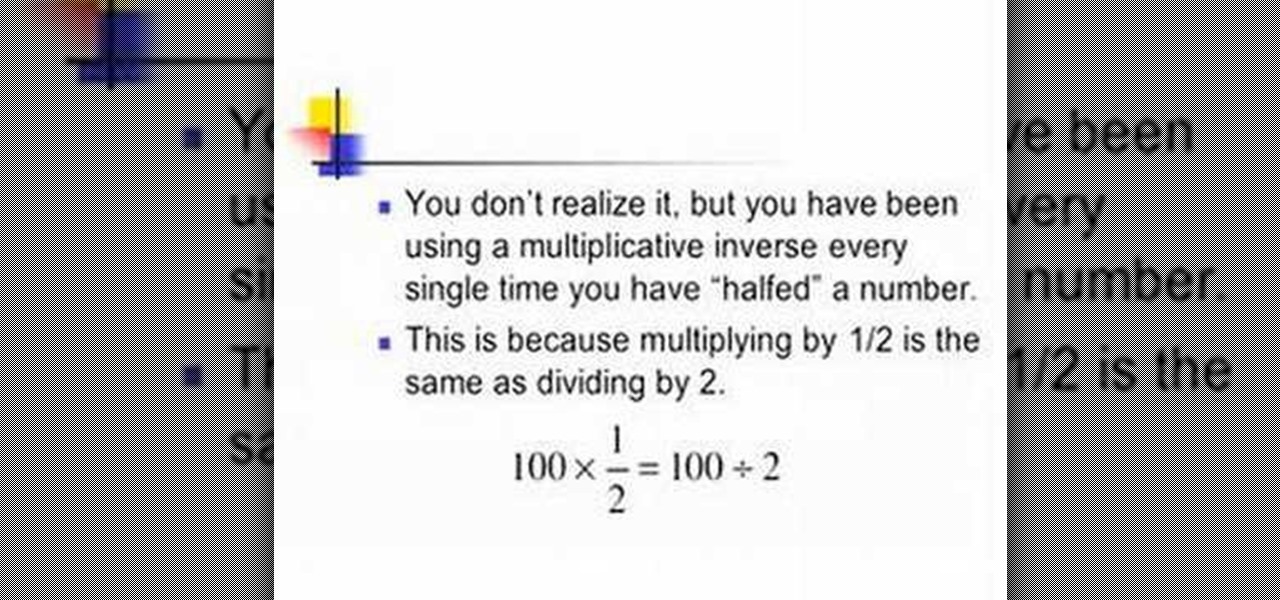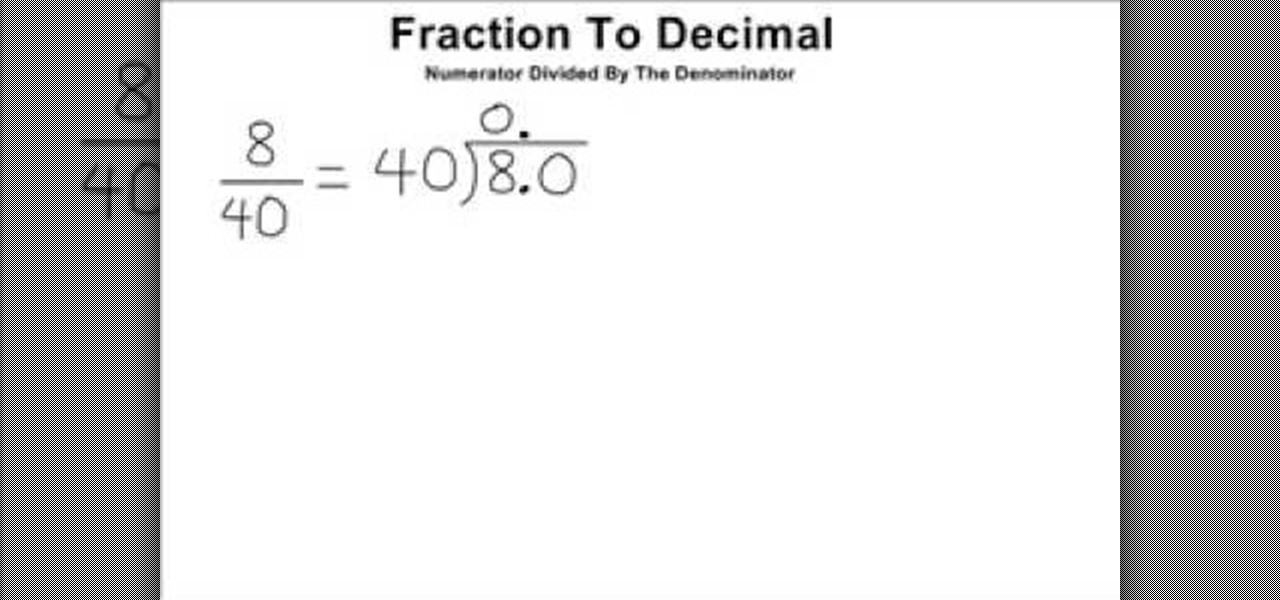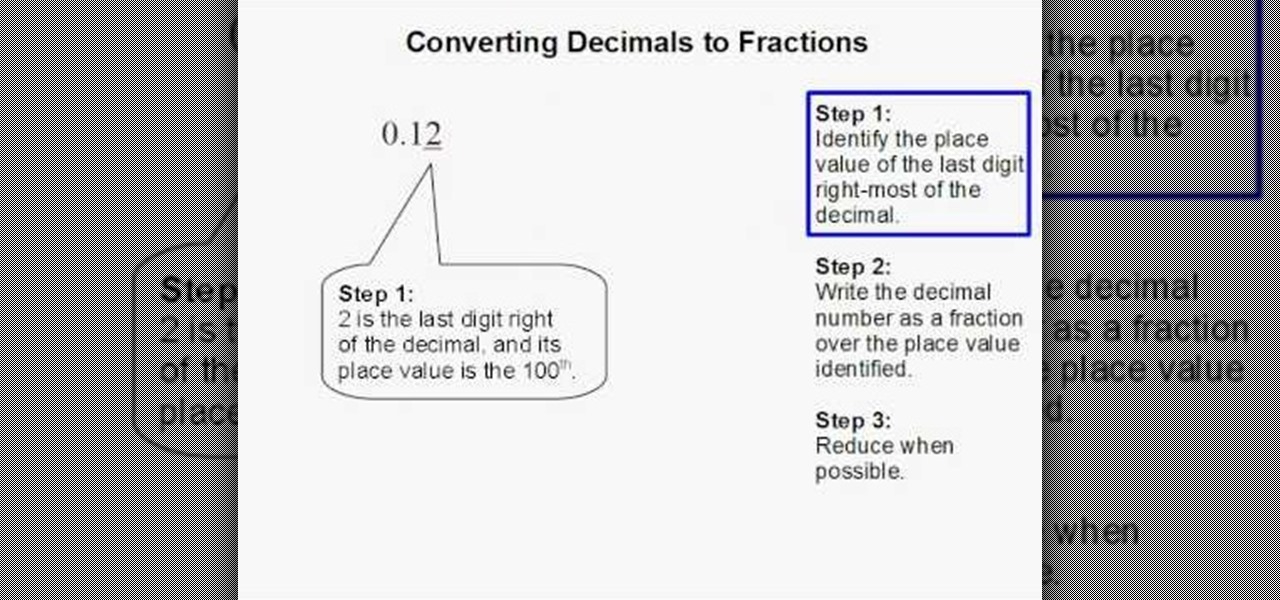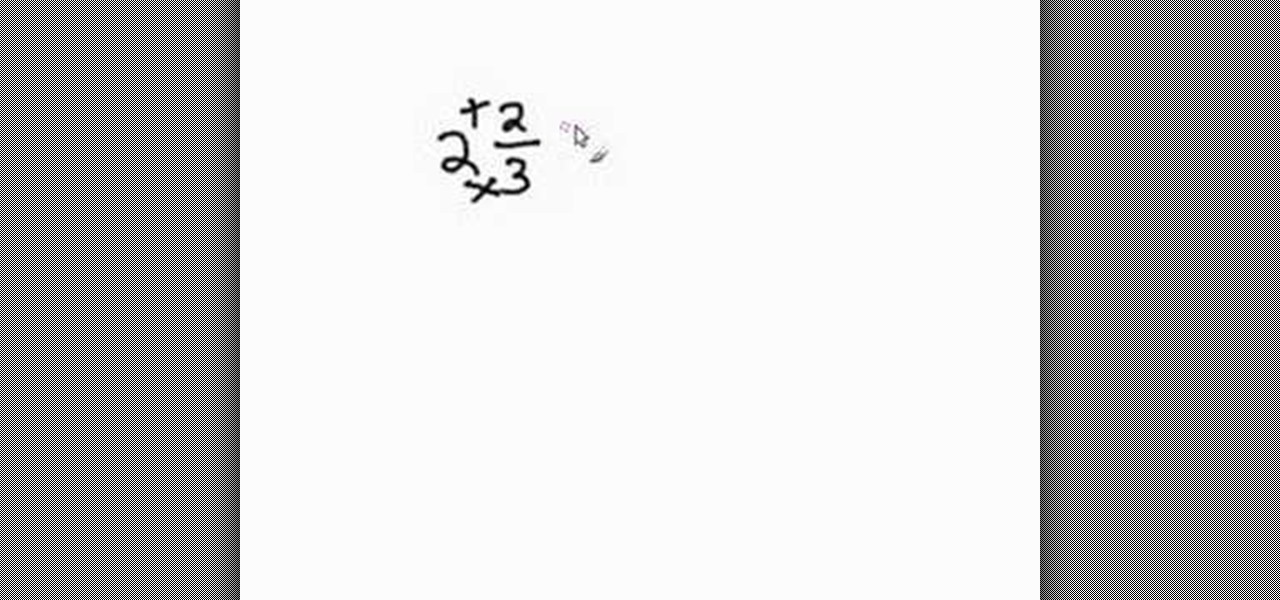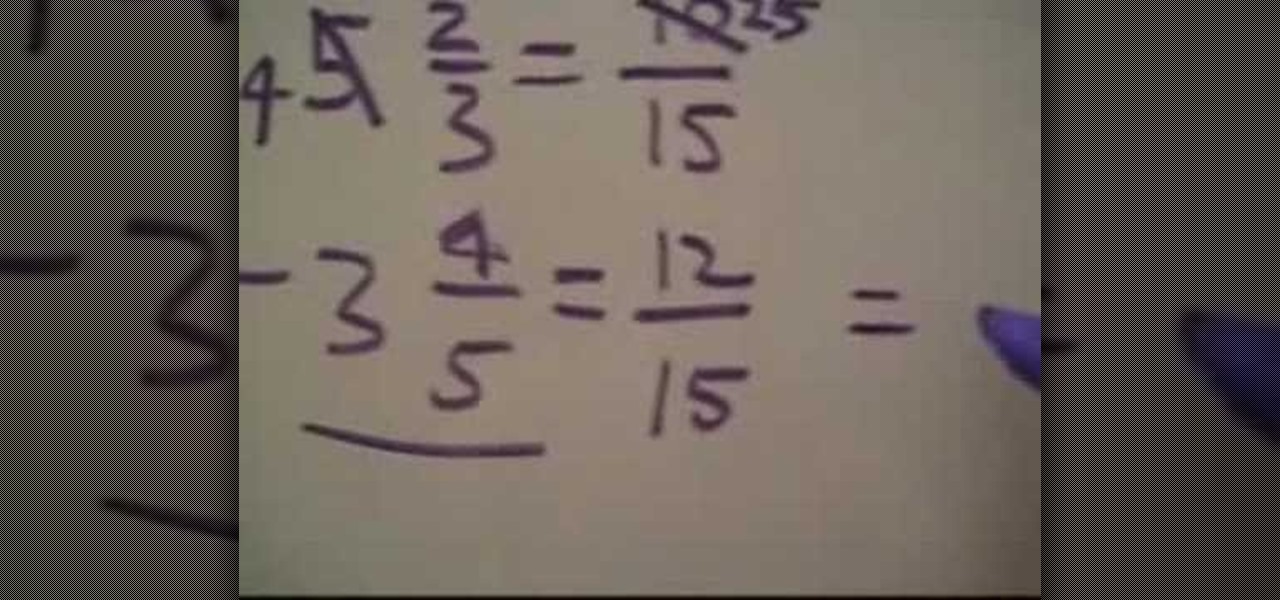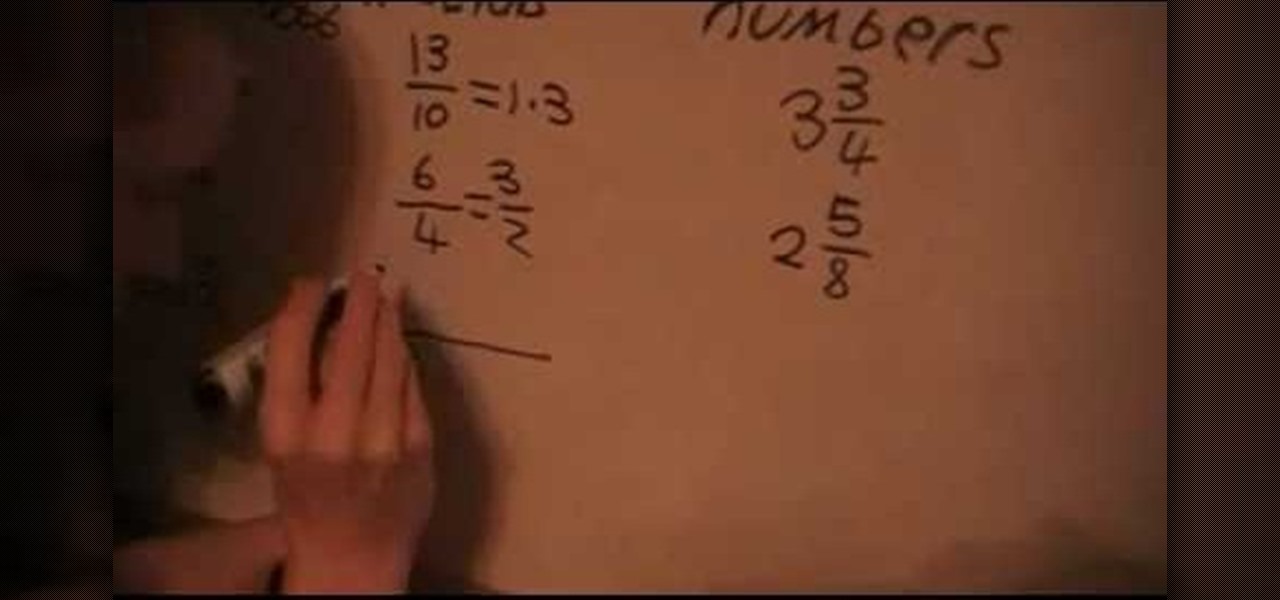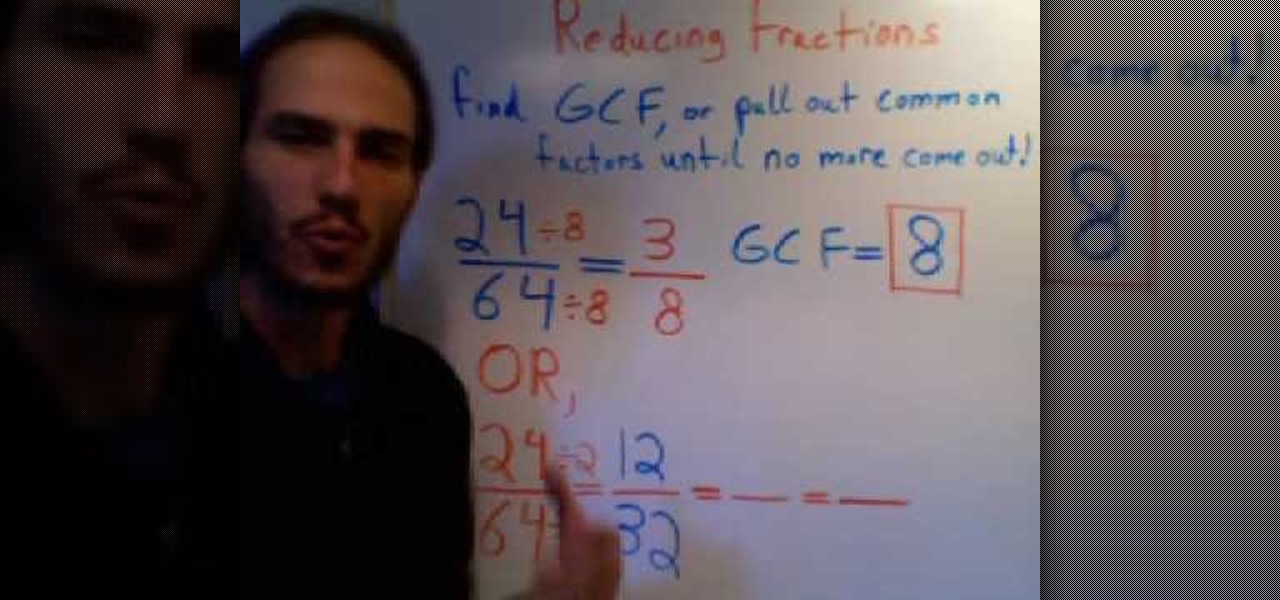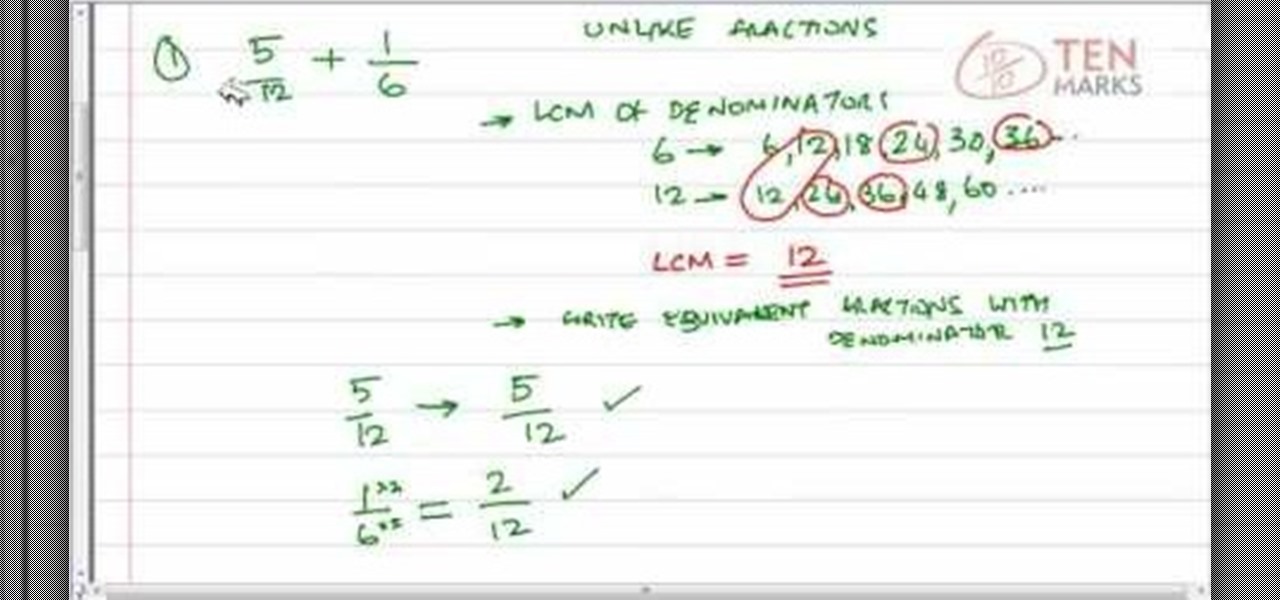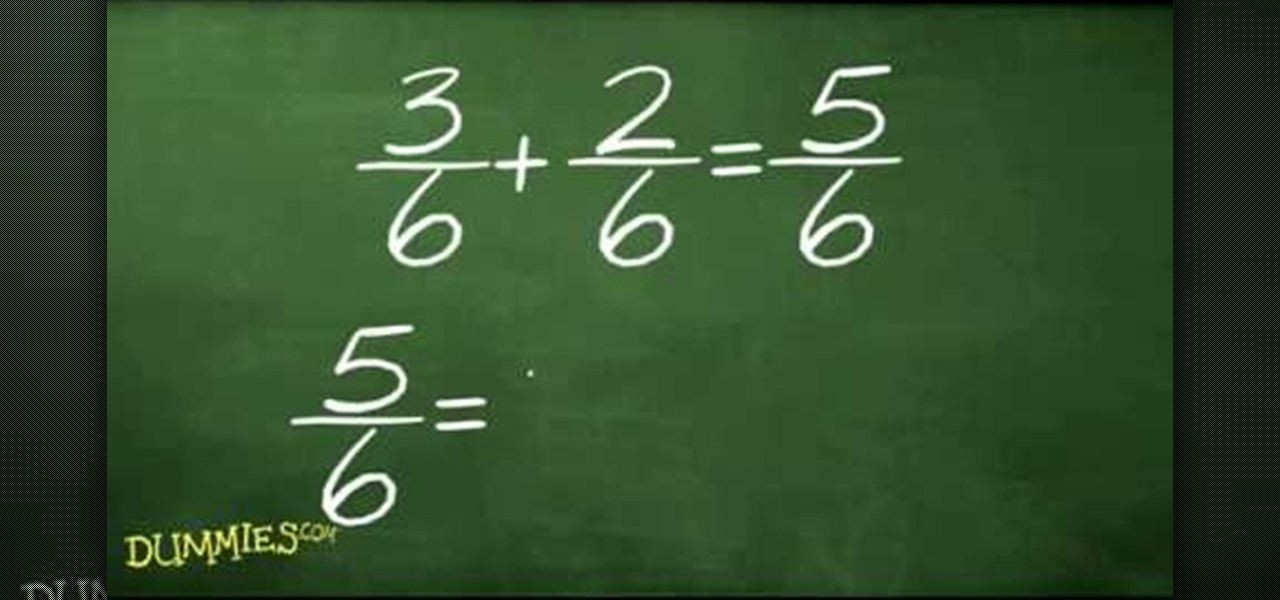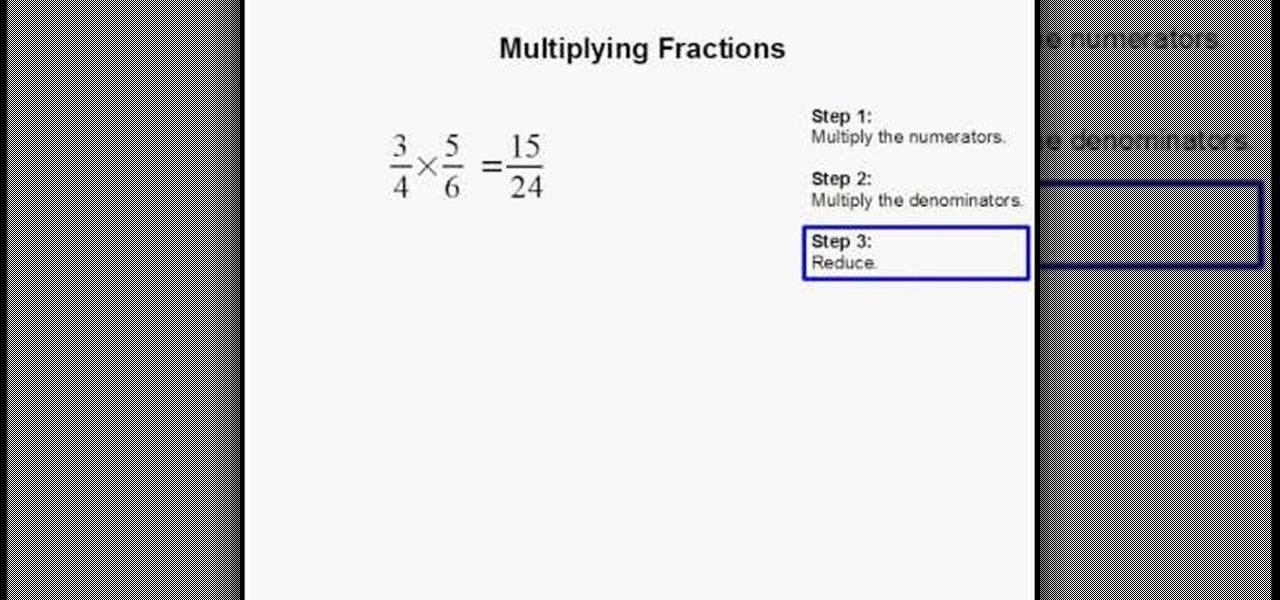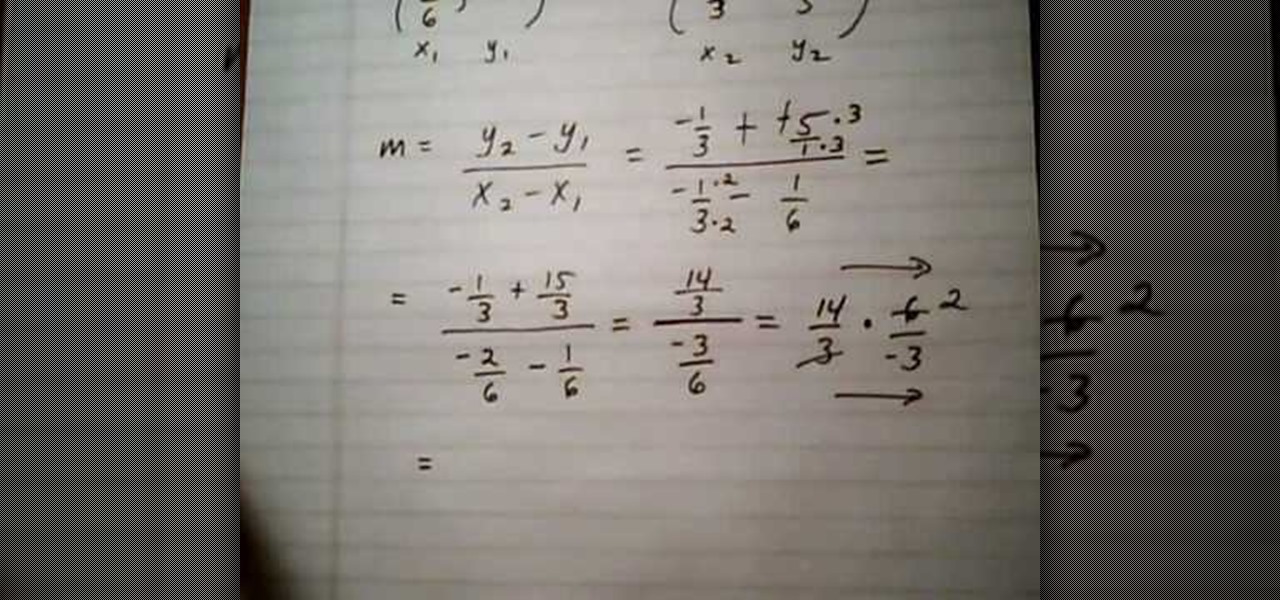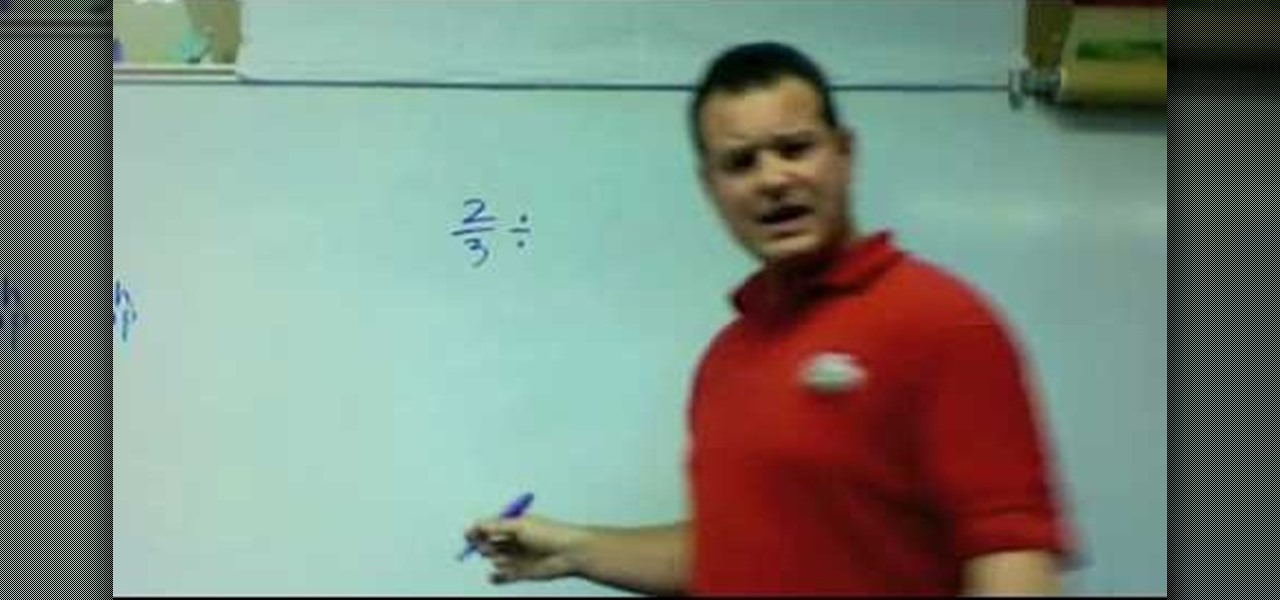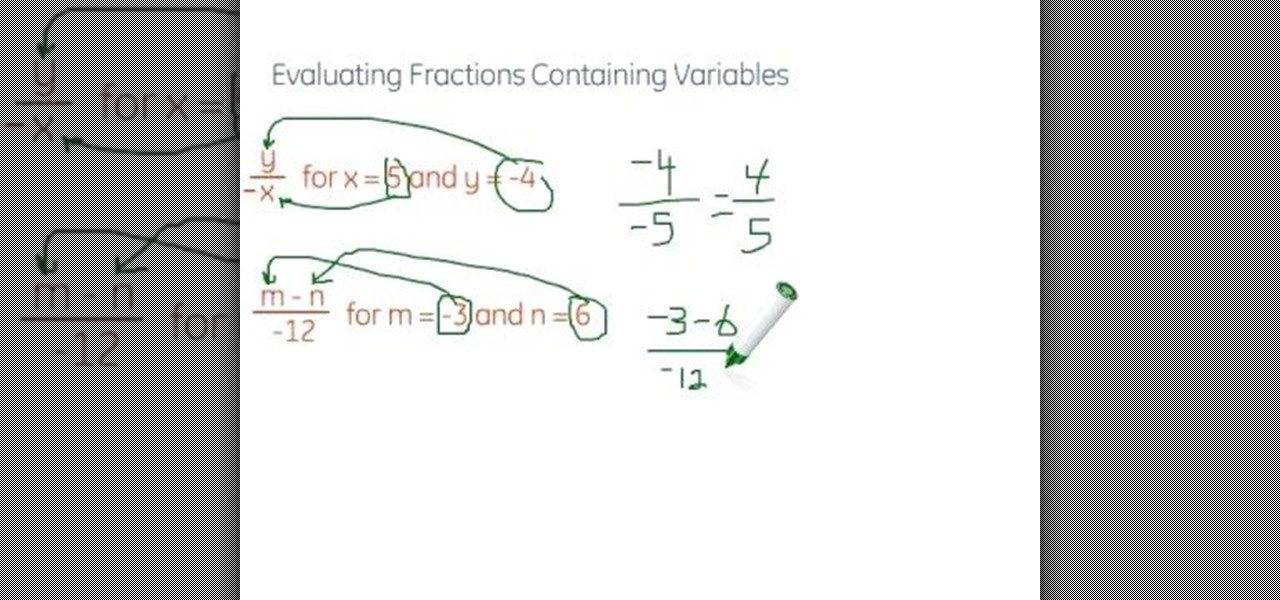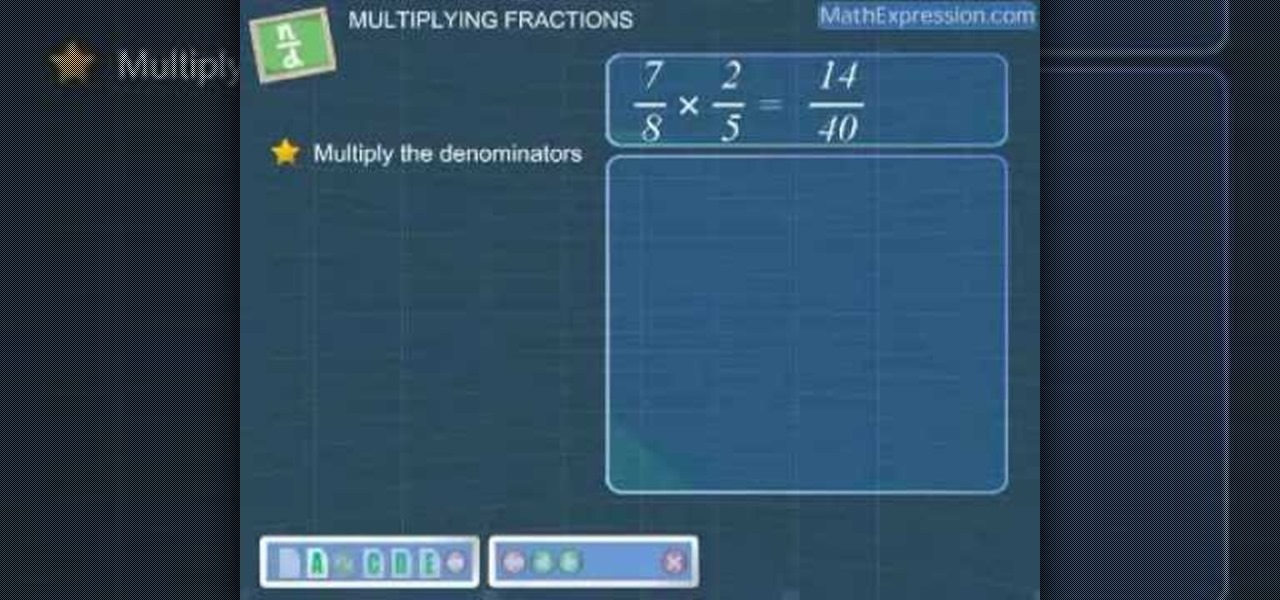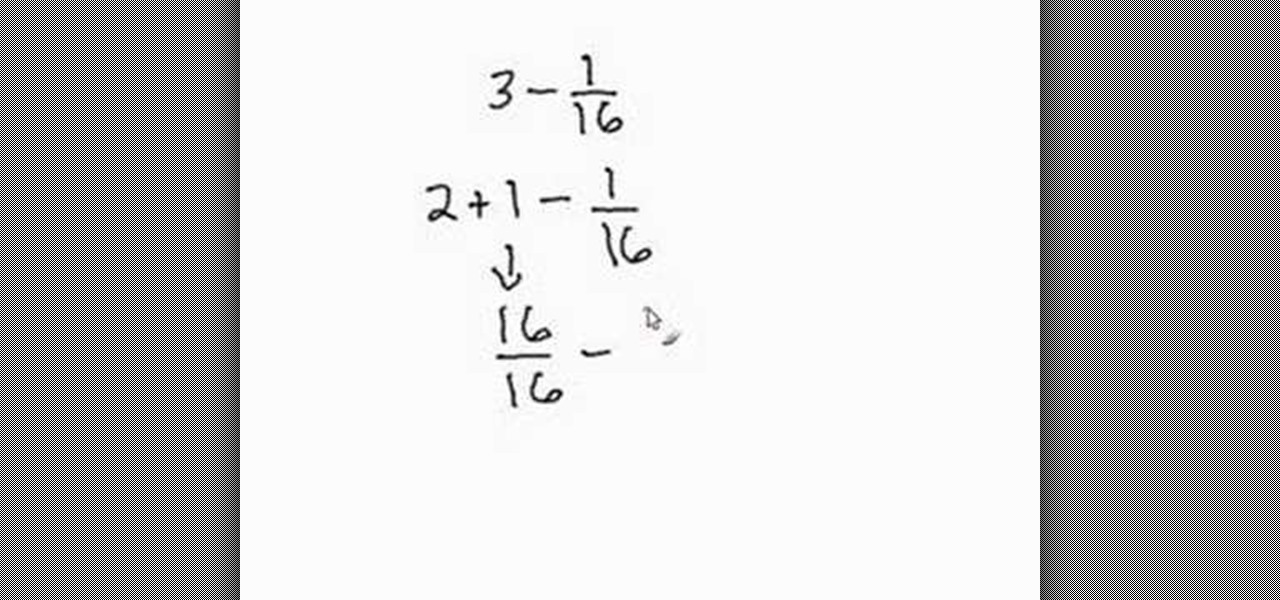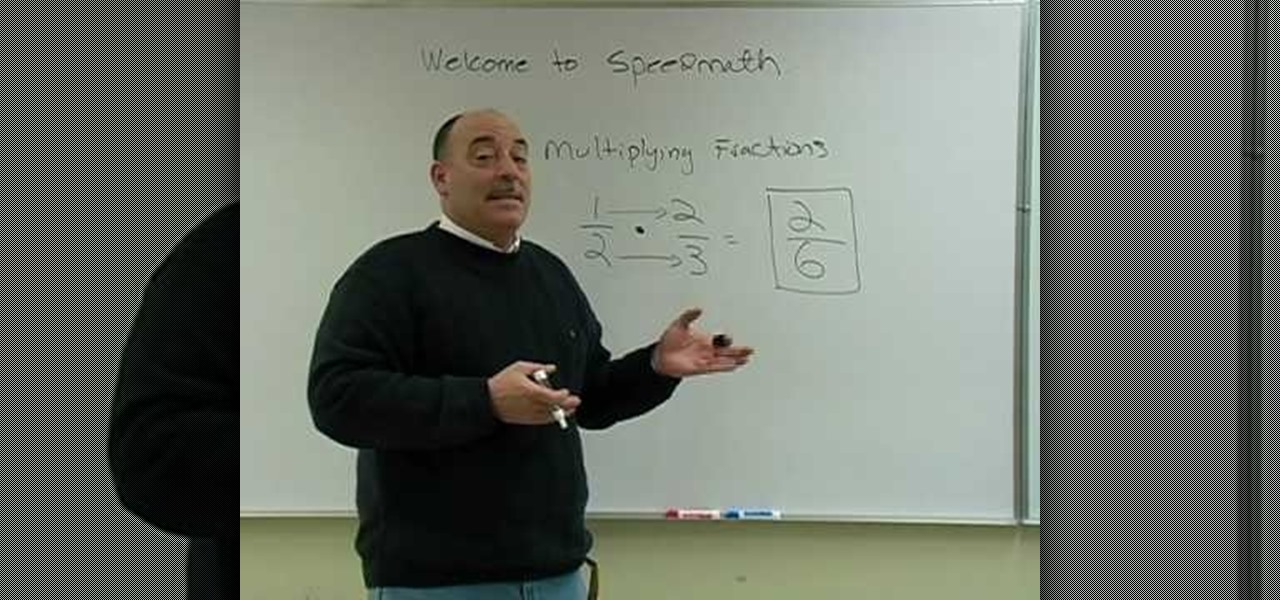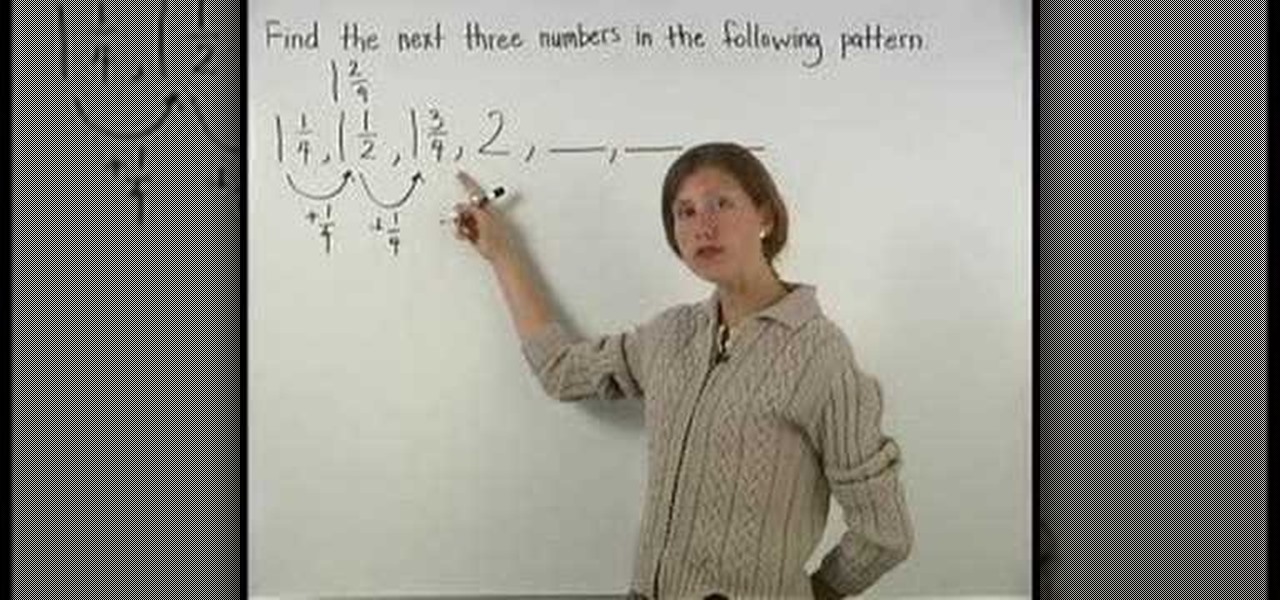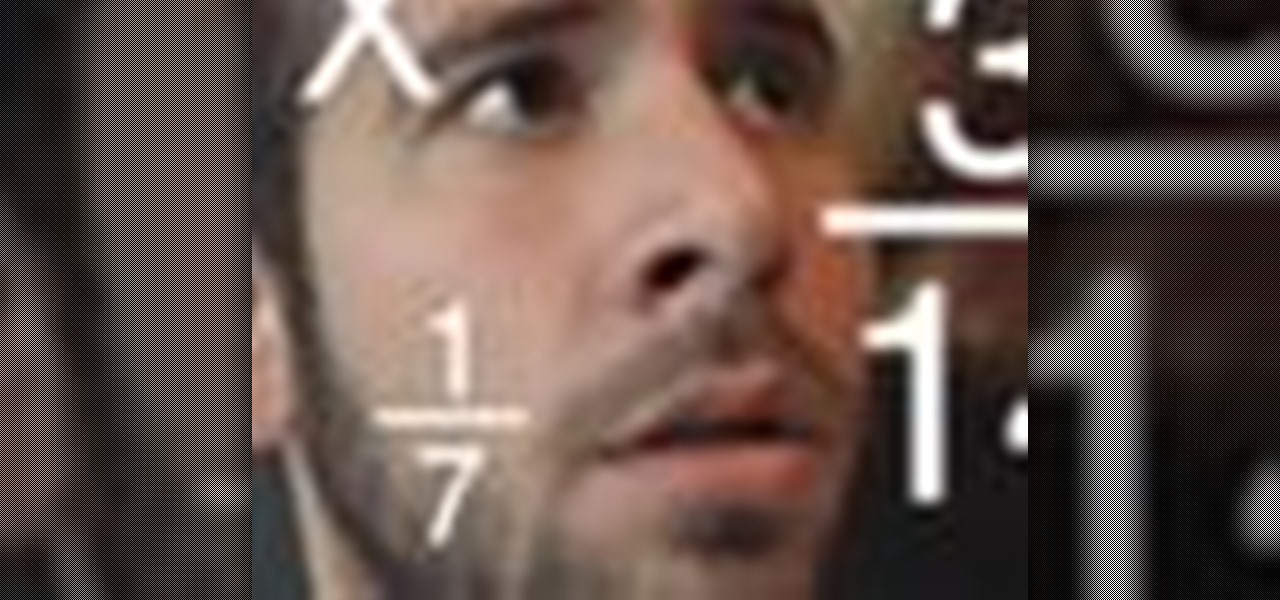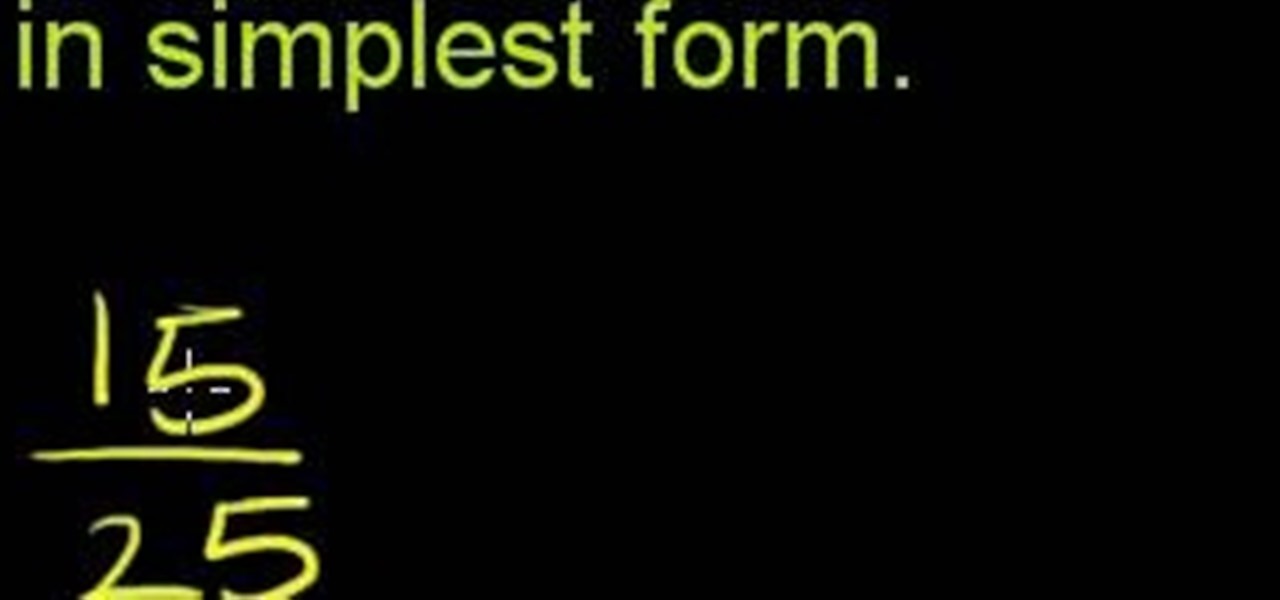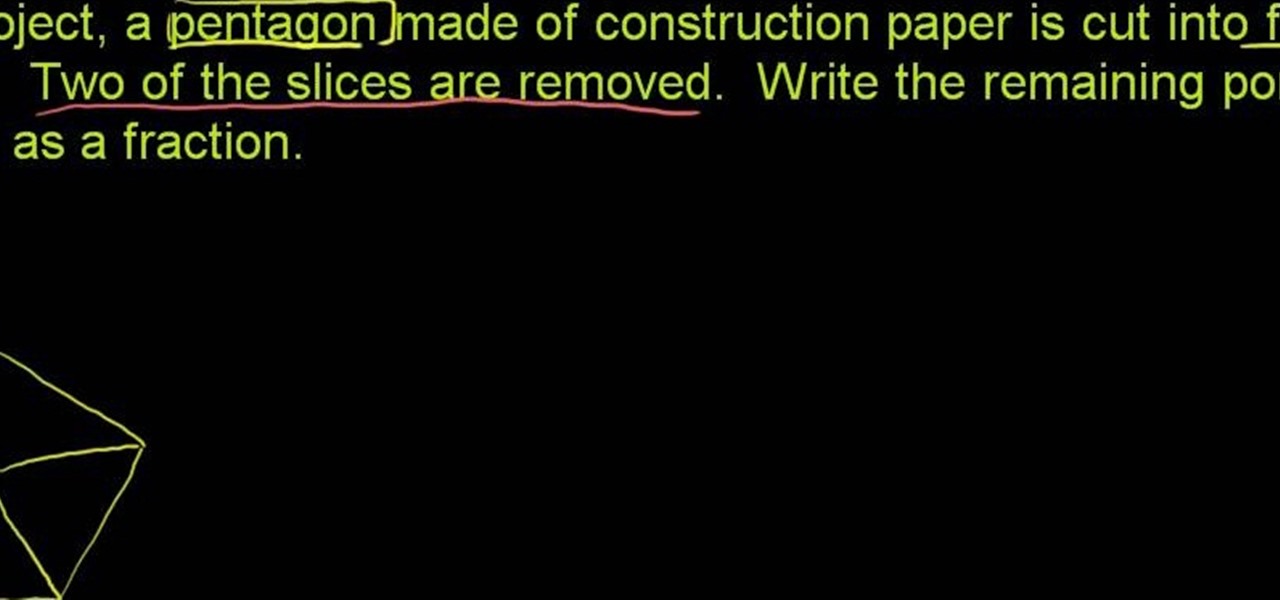
The video shows on a simple example how to convert a given percentage into a fraction. It requires basic knowledge about simplifying fractions. This how-to video does not feature spoken word or any kind of sound. The explanation is done with animated figures and explanatory written annotations. The ability to perform this conversion from a given percentage into a fraction can help putting a better imaginable picture to a percentage or make the solving of a mathematical calculation easier.
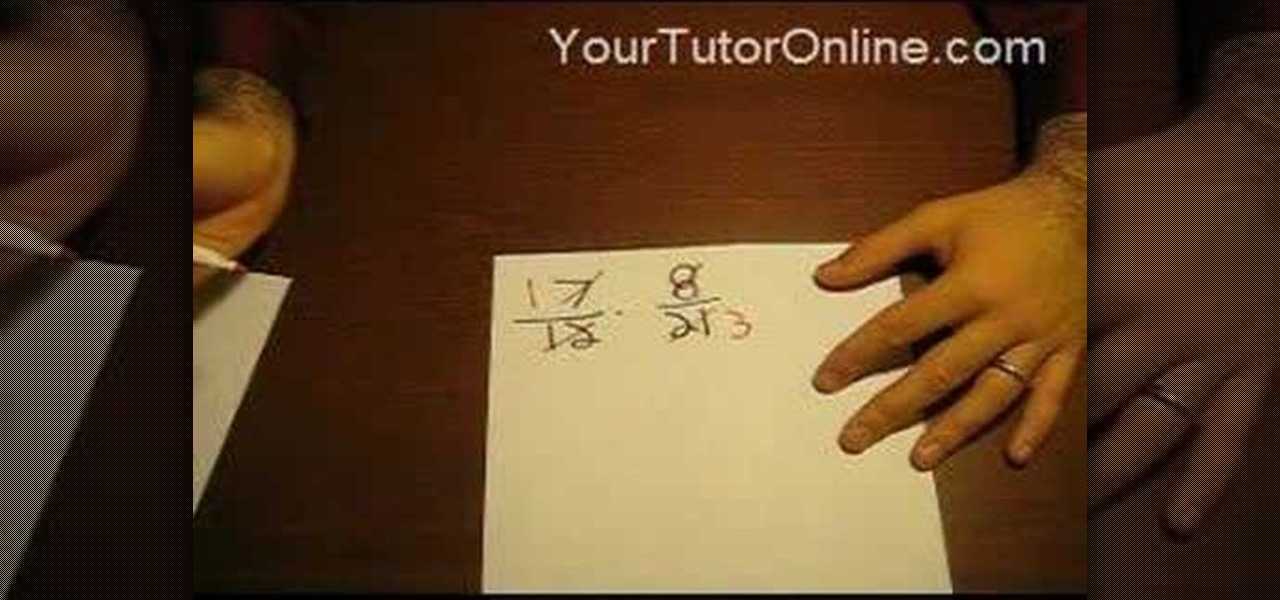
This video demonstrates the simplest method for multiplying fractions. According to the tutor, one should first identify the highest common factor with which to reduce the two fractions, by themselves, and in relation to each other. The numerators of the two fractions are multiplied and the product is written down as the numerator of the resultant. The same operation is carried out on the denominators of the two fractions, resulting in the denominator of the resultant fraction. The final answ...
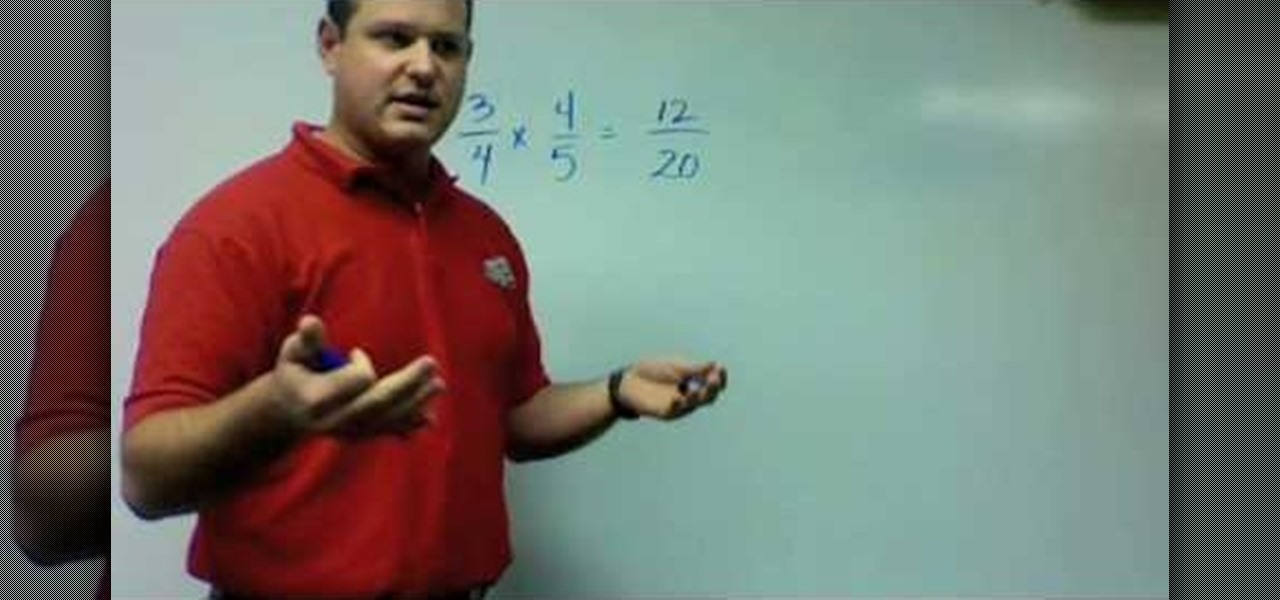
Fractions can look scary. But, don't worry, their bark is not as big as their bite! In this tutorial, learn how to multiply two fractions and simplify the answer into the smallest possible outcome. The basic process is to multiply straight across. Multiply the numerator times the numerator and the denominator times the denominator. You will arrive at a new fraction, from there you can simplify into the most tidy form of the fraction.
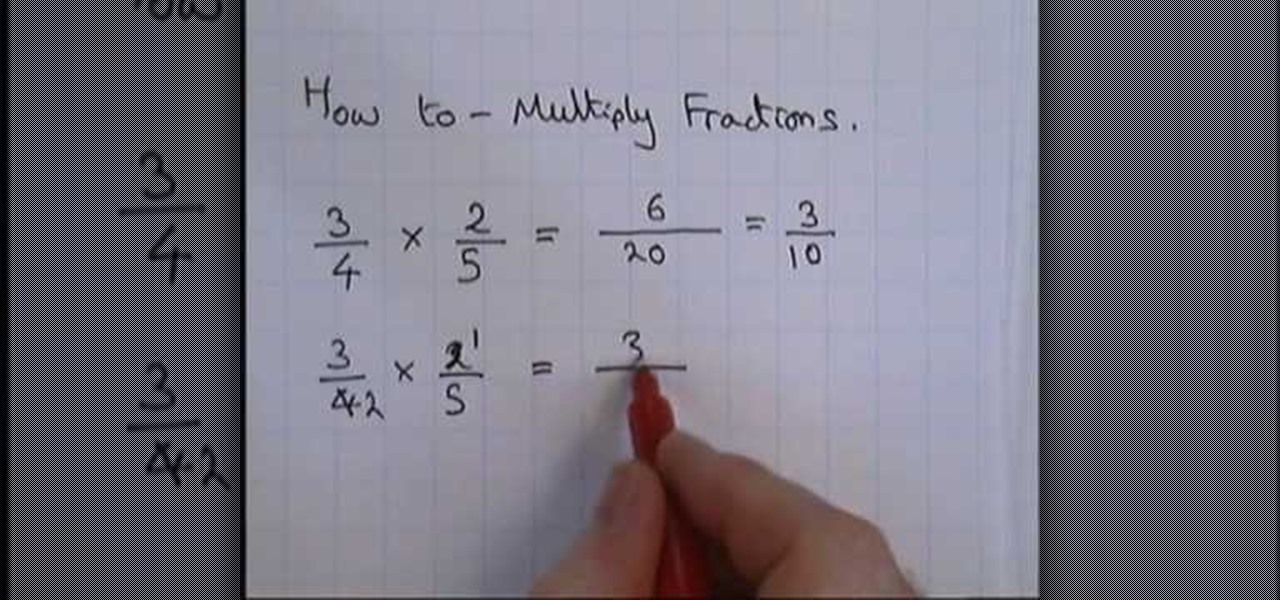
Watch this video to learn how to multiply fractions by fractions. First multiply the top numbers together. For example, if you have 3/5 * 4/7, multiply 3 * 4 and put your product on top of the fraction you will get as a product. Next, multiply the bottom numbers together and put them on the bottom of your resulting fraction. Next see if you can reduce your product to simplify it. You could also do the reducing step first by canceling out any common factors in the numerators and denominators o...

The video teaches the viewer to divide one fraction by another. The process involves taking the reciprocal of the second fraction (flipping it upside down); so if you want to divide 7/3 by 1/2, you flip 1/2: it becomes 2/1. Then it is a multiplication problem: 7/3 x 2/1. The way to multiply two fractions is to multiply the top numbers (here, 7 x 2) over the bottom numbers (here, 3 x 1). So the product of 7/3 x 2/1 is 14/3.

In this math tutorial the instructor shows us how to add three fractions with common denominators. He says that it is similar to adding two fractions with common denominator. He tells us first to add all the numbers in the numerator which gives us a new number which is the numerator in our answer and the denominator to our answer is the original common denominator. Now, if the resulting fraction is improper fraction, you will have to convert it into a mixed number. In this video the author sh...

This is a tutorial on the basics of dividing fractions. The process the video teaches are linear equations where one fraction is divided next to another with a division sign in between. The top numbers are divided and then the bottom and thereby you get the answer. However not all numbers are divisible. When this happens the video teaches the method of multiplicative inverse whereby the divider fraction is flipped upside down which then changes the problem to one of multiplication--think of t...

This video shows a tutorial of adding fractions. The first example shows a fraction that has like denominators so all you had to do is add the denominators. In the second example it shows two fractions that do not have like denominators. Therefore, you need to find the greatest common factor among the two denominators. Once this is found, you multiply the fraction on both the numerator and denominator to make both of the fractions match. Then all that is left is to add the numerators to finis...

This video describes how to divide fraction values using simple method. Example we will take as in video "12" should be divided with "1/2" that is "12%(1/2)=?". This is the example we should solve. In first step we has to flip the "Denominator" to easily find the output. So now, we can rewrite the example as "(12/1)%(1/2)".It is in the form of division, when we convert it to multiplication it will change as "(12/1)/(1/2)" and then "(12/1)*(2/1). So, denominator "1/2" flipped to "2/1". In the ...

Sometimes it is much easier to work out an equation if your numbers are in decimal form instead of fractions. This is especially useful if you are using a basic calculator.

At first, the concept of converting decimals to fractions sounded very difficult. But after watching this video and following the step by step instructions, it was easy. It is important to know the basic concepts of numerals, i.e., tenths, hundredths, etc. They provided an example of making .12 into a fraction and then reducing it to an easily understandable number. Search on WonderHowTo to solve more math woes!

In this Math tutorial, you will learn how to convert a mixed number into an improper fraction. The narrator explains the process in a very concise yet simple manner that will make math problems involving mixed numbers so much easier to solve. The general idea is to multiply the whole number with the denominator and then add that to the numerator. The explanation and illustration in the video makes it easy to understand.

In this video we learn how to convert recurring decimals to fractions. Start off by writing out the decimal with the dot next to it to show that it's recurring. This means that the number goes on forever and doesn't stop. To convert this to a fraction, write down the number as the numerator. On the bottom you will put the number 9 always. Now, you can divide these two numbers with each other using a calculator. Once you do this, you will get the correct answer. Once you divide it out, you wil...

In this tutorial, we learn how to multiply fractions. First, you must know that the number on the top is called a numerator and the number on the bottom is the denominator. First, write out your equation with the fractions listed horizontally next to each other. After this, multiply the numbers straight across. The numerator will multiply with the numerator and same for the denominator. After this, when you get the final fraction you will need to reduce this further if you can. If you end up ...

In order to subtract mixed fractions, you'll need to look at the denominators carefully. If the denominators do not match, you'll need to find a common denominator. For example, 5 2/3 minus 3 4/5 do not have the same denominator. The lowest common denominator for them is 15.

In this tutorial, we learn how to divide fractions into decimals. First, you will want to divide your numerator by your denominator. If you can simplify this number further, it will make it easier for you to divide. You can do this on the calculator, or you can do it by hand. The numerator will go on the outside of the division sign and the denominator will go on the inside. When you divide, you will come up with a decimal. If you have an improper fraction, you will probably end up with (1.so...

In this tutorial, we learn how to reduce and simplify fractions. When you do this, you want to make sure you have taken common factors out of the top and bottom, then divide them out until the only common factor is the number one. You will keep going until you get to this point, or you can do another method by finding the greatest common factor. To understand this better, take the example of 24/64. The greatest common factor of these numbers is 8, because it divides evenly into both of them. ...

In order to add unlike fraction, using basic math, you will need to find the lowest common multiples of the denominators. In order to add 5/12 and 1/6, you will need to make the denominators the same. The lowest common multiple, for these fractions is 12.

In order to add mixed number in fractions, in a math problem, you will need to focus on the denominator. The denominator is the lower number in the fraction. The top number is called the numerator.

This video explains how to convert fractions to decimals by providing a good example. 1. To better explain the notion draw a box divided into sections to represent the 1 whole. 2. In this example the fraction used is 7/10. So, you have to color in 7 out of the 10 sections that make up the box. 3. To make the conversion to a decimal is now even simpler. Since not all the boxes are shaded the number must be less than 1, so start by writing 0. 4. The next step is to check the number of boxes you...

In this tutorial the instructor shows how to solve equations with fractions and decimals. When you have a fraction first try to simplify it by canceling out the common factors in the numerator and the denominator. If there are any decimals convert them into fractions. Now if you have a number multiplying a equation apply distributive law and simplify the equation. Now finally try to get the variables on one side and numerical terms on the other side of the equation and finally solve for the u...

Learn how to add or subtract fractions with math in simple steps. First convert any story line you have into a fraction. Now you have to convert the denominators so that both the fractions have the same. To do so multiply both the numerators and denominators with the same number. Now when you have the same denominators add the numerators to get the answer. Reduce the fractions to a lower value if you wish. Try this out with some other examples.

Do you hate fractions? Do you hate fractions even more when you have to multiply fractions together? This video will show you how to multiply fractions with ease. By the usage of a simple step-by-step process, the video demonstrates the steps used to multiply a fraction as well as explaining each of the steps in words rather than expecting a person to understand what is happening without prior knowledge. By finishing this video, you'll be able to multiply fractions!

In this video tutorial the instructor shows how to find the slope of a line given two points with fractional values. To do this first name your two points as point 1 with coordinates as x1, y1 and point 2 with coordinates x2, y2. Then substitute the values in the equation of the slope which is slope m = (y2 - y1) / (x2 - x1). Now all you have to do is simply the fraction after substituting the point values. Be careful about the signs while substituting in the formula. Now finally after solvin...

Having a hard time with dividing fractions? Learn the simple steps it takes to complete these division problems. With this instructional educational video you learn the golden rule, "NEVER DIVIDE FRACTIONS" Instead you multiply by the reciprocal which is the flipped version of the original fraction. Then from there is simple, you just multiply straight across like any other multiplication problem then just simplify. This one minute video will take you through all the steps and give you an exa...

In this tutorial the instructor shows how to multiply fractions. He shows how to do these kind of problems by solving an example. He says that while multiplying fractions we directly multiply the numerators to obtain the new numerator and then we multiply the denominators to obtain at the new denominator. He further shows how to do this with an example and in the final step he also performs deductions to obtain the fraction in its simple from. This is a good tutorial to learn how to multiply ...

This video is a great one on learning about evaluating fractions. The voice explains how to first plug in the numbers given for each variable in the fractions. He also explains the importance of simplifying the top and bottom first before simplifying the entire fraction. He also explains ways that would not be helpful in solving the problem and comparing that with the correct way. Then he notes the use of your simple math rules to find the answer. Excellent video for viewers.

In this video the tutor shows how to multiply fractions. She says that compared to adding or subtracting fractions, it is easy to multiply fractions. She says that to multiply fractions first we need to multiply both the numerators together to arrive at the new numerator. Similarly we multiply the denominators to arrive at the new denominator. Now we can further reduce this new fraction to its simple form which is the desired result. This video shows a small step-by-step method to multiply eq...

In order to subtract fractions from whole numbers you have to perform a few steps. First we have to borrow one from the whole number. So if you are subtracting 1/16 from 3, 3 becomes 2. Then you have to change the one you borrowed, so the 1 becomes 16 over 16 or 16/16 to match the common denominator in the fraction 1/16. So 16/16 - 1/16 = 15/16. Then you add the 2 that you had left after you borrowed the one from the whole number. The answer is 3 - 1/16 = 2 15/16.

Watch this video to learn how to convert improper fractions to mixed numbers. For example, follow these steps. First step is one fraction value. For example 7/3. Second step is divide the numerator by denominator means when 7 divide 3 you can get remainder as 1. Means 7 before value can multiply with the 6 so you can subtract 7-6=1 that is remainder. Multiplied value of 3 nothing but 2 is multiplication of the mixed numbers remainder take it as a numerator and denominator is always take it as...

Are you slow in multiplying and dividing your fractions? Let Mr. Rider from Speed Math 101 walk you through an easy to follow marker board math lesson that will have you managing those numerators and denominators like a pro. With a simple and easy to remember process, Mr. Rider walks you through common examples, misunderstandings, and problems. Improve your speed and accuracy in math class with the Speed Math 101 method. Avoid the usual pitfalls of improper fraction reduction that might you l...

This video teaches us the method to simplify the fractions. Let us take an example of 18/24. Find a number that goes into both 18 and 24. Divide the top and bottom by the same number. Here, 2 will go into both numbers. So, the number now becomes (18/2)/(24/2) which gives 9/12. This fraction can be further simplified by dividing the top and bottom by 3. We get 3/4 which is our final answer. The fractions 18/24, 9/12 and 3/4 are called equivalent fractions since they are of the same size. Simil...

This is an educational site where we can learn about math lessons with example videos, interactive practice problems and can do self-test. The associate teacher in the video teaches us about fraction problems. She has written four numbers on the board, which is 1 1/4, 1 1/2, 1 3/4, and 2. She explains how to find the next three numbers following the same pattern. The teacher in the video tells that the key in solving the problem is to think of 1 1/2 as 1 2/4. Each number in the given problem ...

Math is one of those subjects in school where you either love it or hate it or just don't get it. But math is nothing to fear, because it's a part of our everyday lives, and ifs something everyone should know the basics of. Don’t let math intimidate you. Whether you’re multiplying two fractions or a fraction and a whole number, solve the problem without a calculator in just a few steps.

Sometimes, problems are easier to solve if the numbers are presented in different ways. For example, if you are having trouble doing an equation with an improper fraction, consider turning that fraction into a mixed number to make math easier.

In this video the tutor shows how to add fractions. Fractions are numbers in the form a/b, where a and b are normal numbers. He shows that to add two fraction we need their denominators to be same. If they are not same we need to take their least common multiple and change the fractions so that they have equal denominators. Now the numerators of these fractions can be directly added and the resultant fraction contains this numerator along with the original common denominator. Now this fractio...

From Ramanujan to calculus co-creator Gottfried Leibniz, many of the world's best and brightest mathematical minds have belonged to autodidacts. And, thanks to the Internet, it's easier than ever to follow in their footsteps. With this free math tutorial, you'll learn how to subtract a mixed number from a fraction in basic arithmetic.

From Ramanujan to calculus co-creator Gottfried Leibniz, many of the world's best and brightest mathematical minds have belonged to autodidacts. And, thanks to the Internet, it's easier than ever to follow in their footsteps. With this installment from Internet pedagogical superstar Salman Khan's series of free math tutorials, you'll learn how to rewrite a ratio as a fraction in its simplest form.

From Ramanujan to calculus co-creator Gottfried Leibniz, many of the world's best and brightest mathematical minds have belonged to autodidacts. And, thanks to the Internet, it's easier than ever to follow in their footsteps. With this installment from Internet pedagogical superstar Salman Khan's series of free math tutorials, you'll learn how to write a decimal number as a simplified fraction in basic mathematics.

From Ramanujan to calculus co-creator Gottfried Leibniz, many of the world's best and brightest mathematical minds have belonged to autodidacts. And, thanks to the Internet, it's easier than ever to follow in their footsteps. With this installment from Internet pedagogical superstar Salman Khan's series of free math tutorials, you'll learn how to express remaining parts as a basic fraction in simple math.








